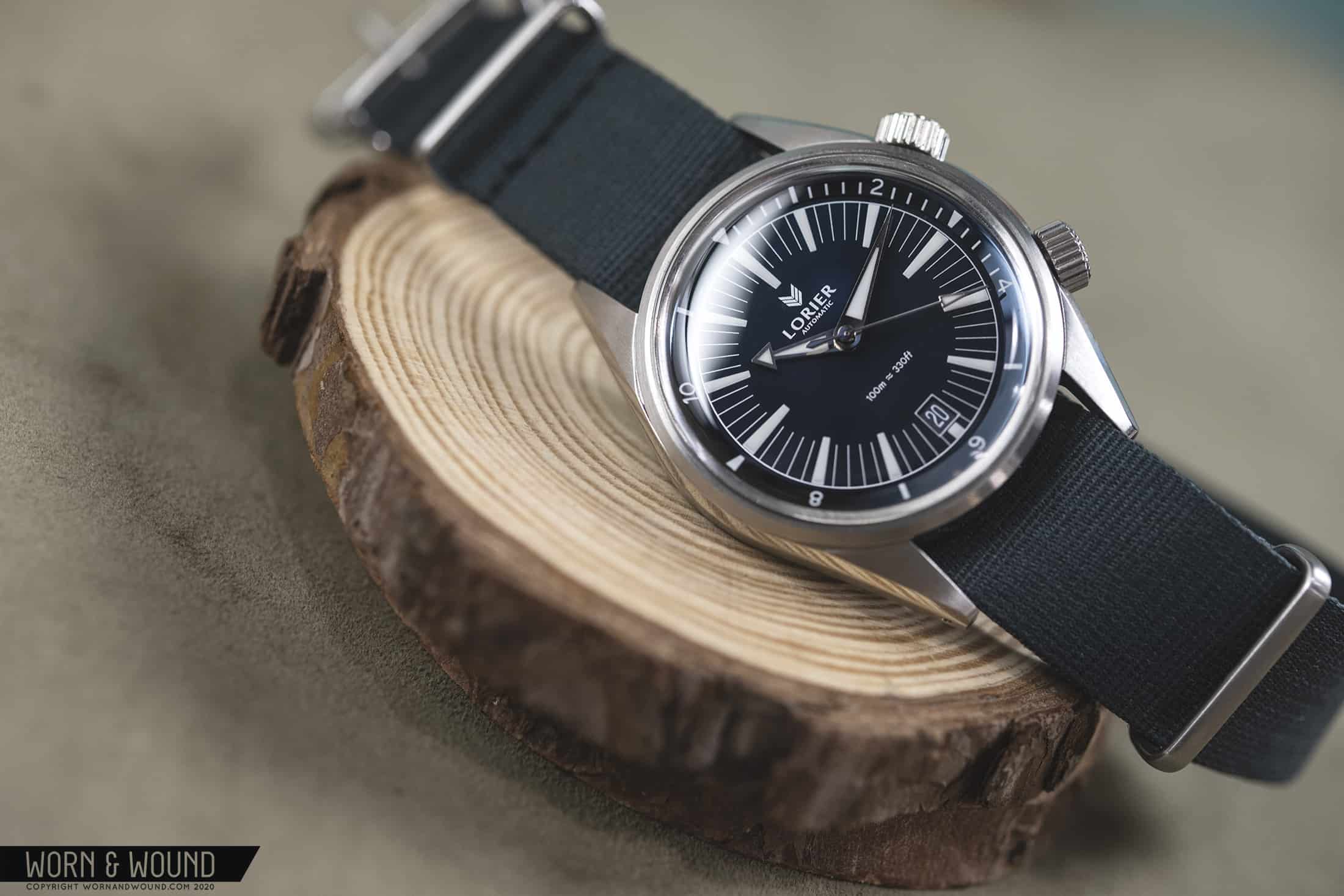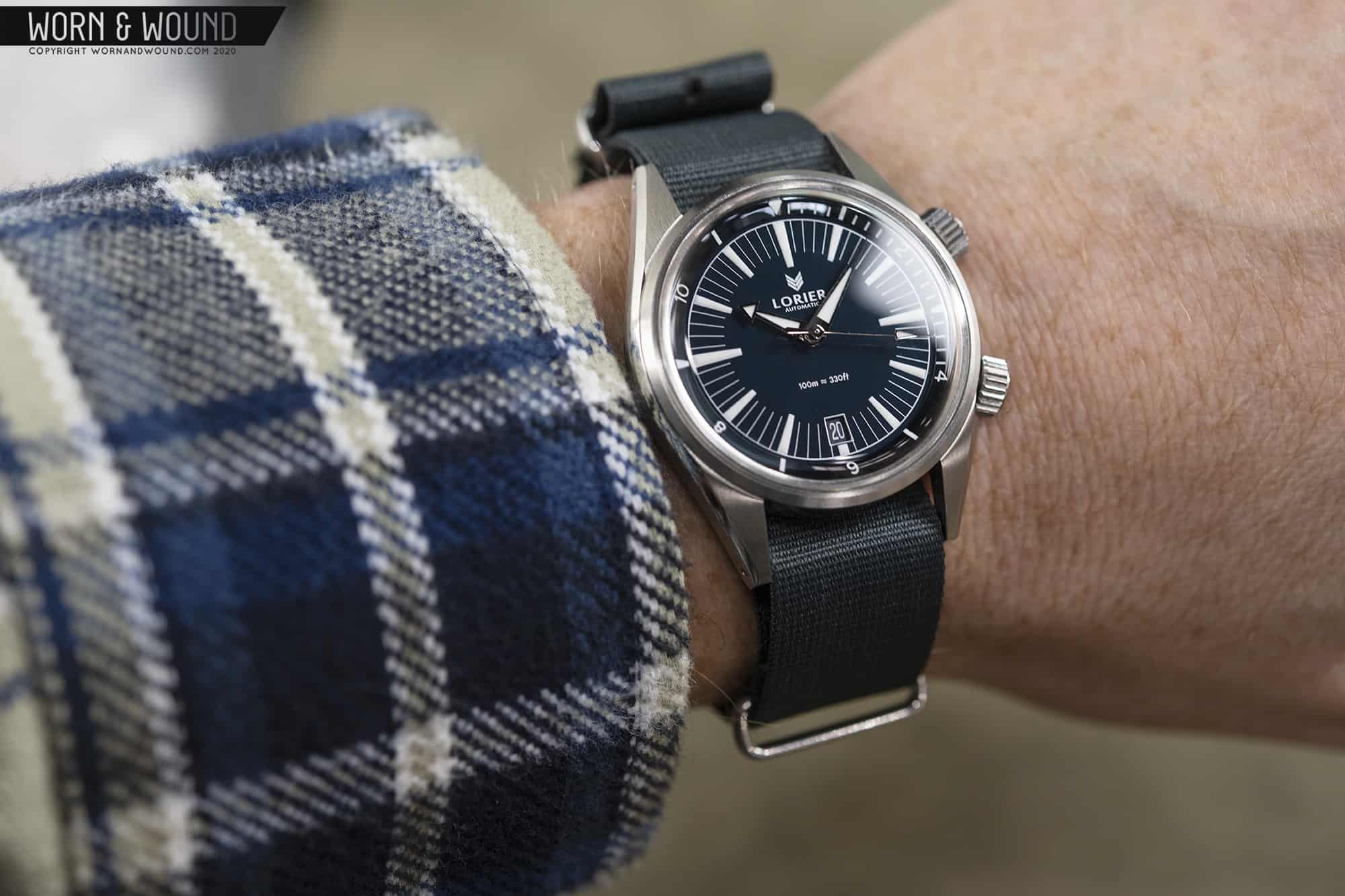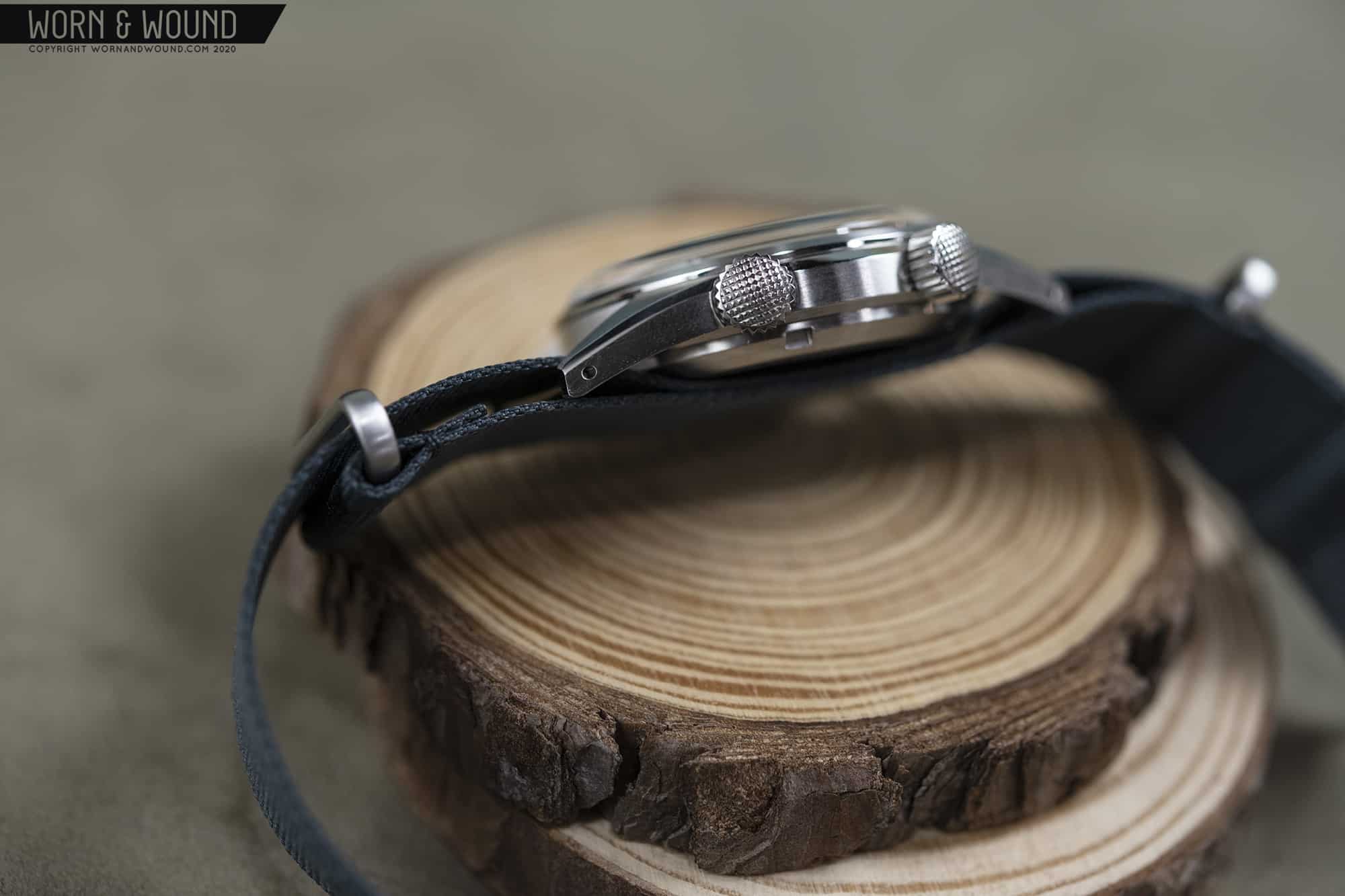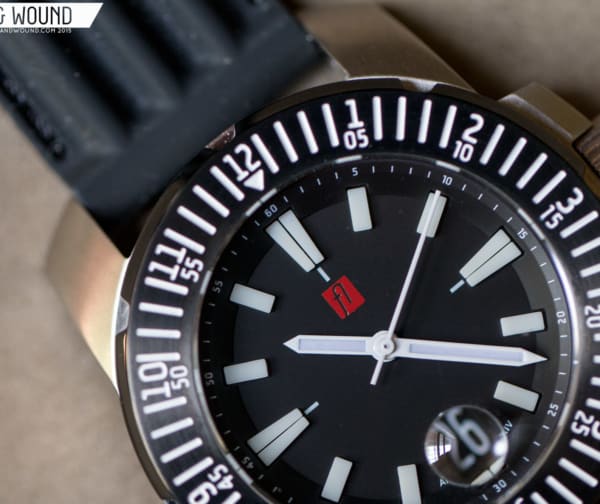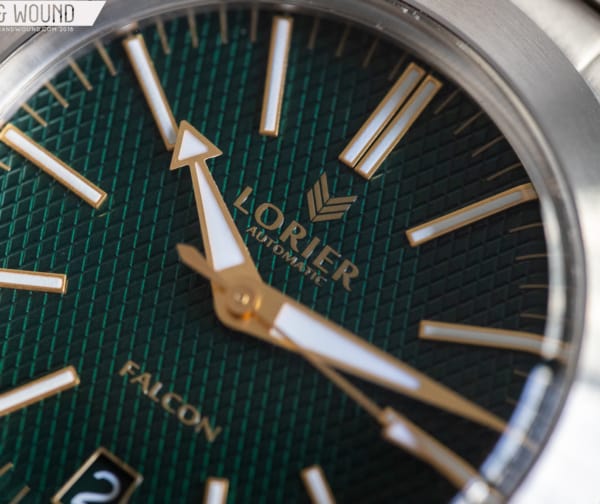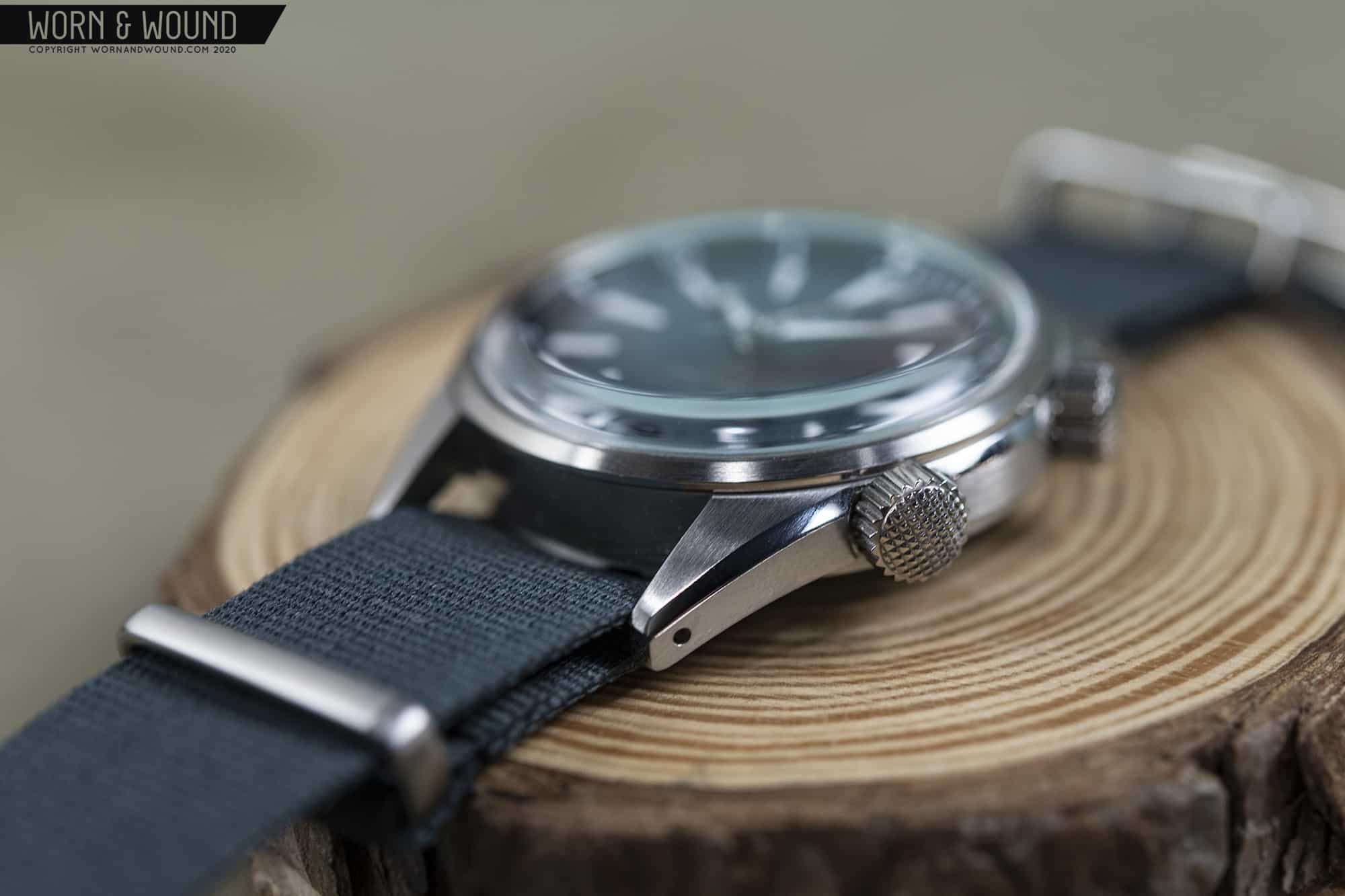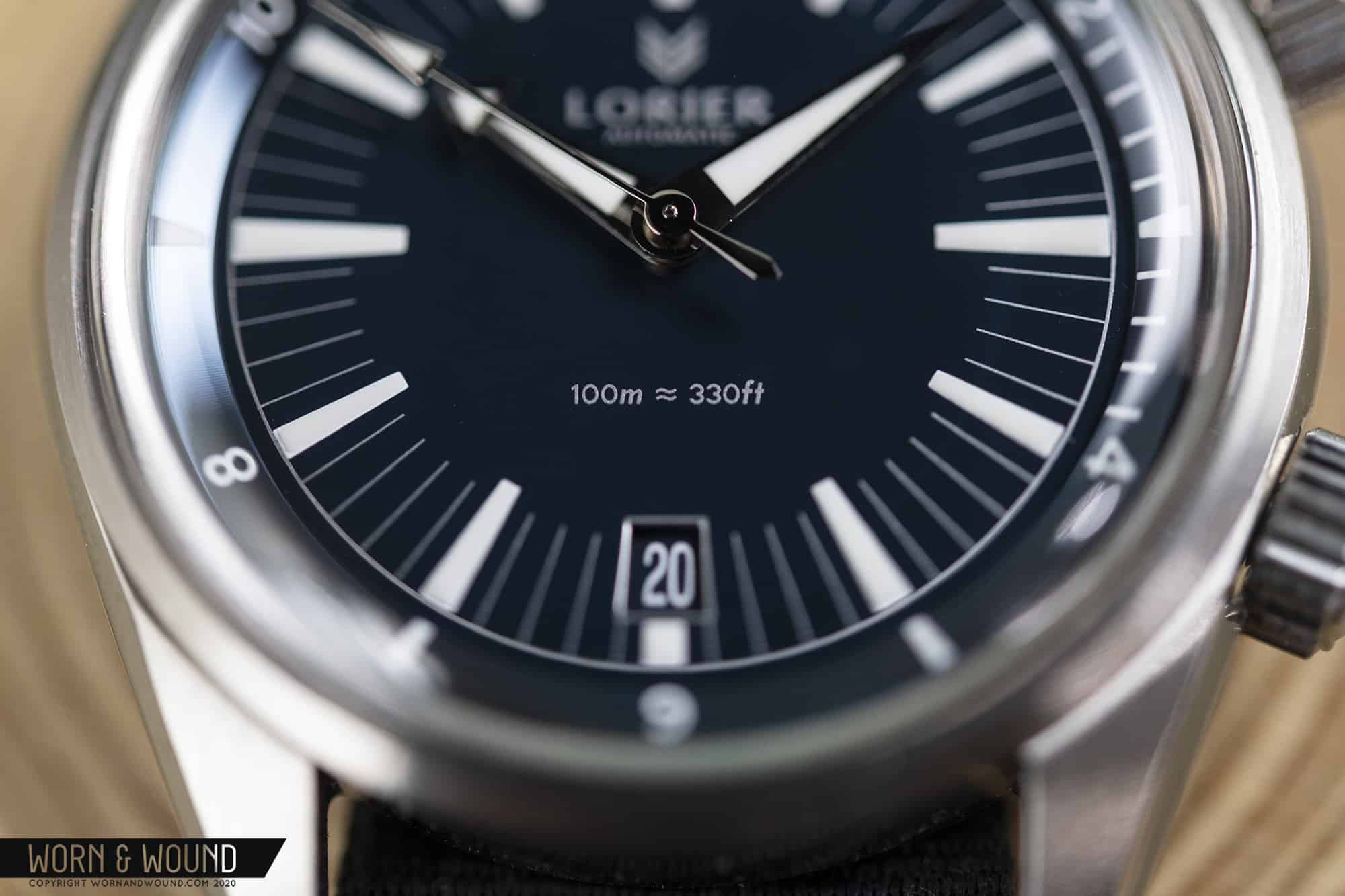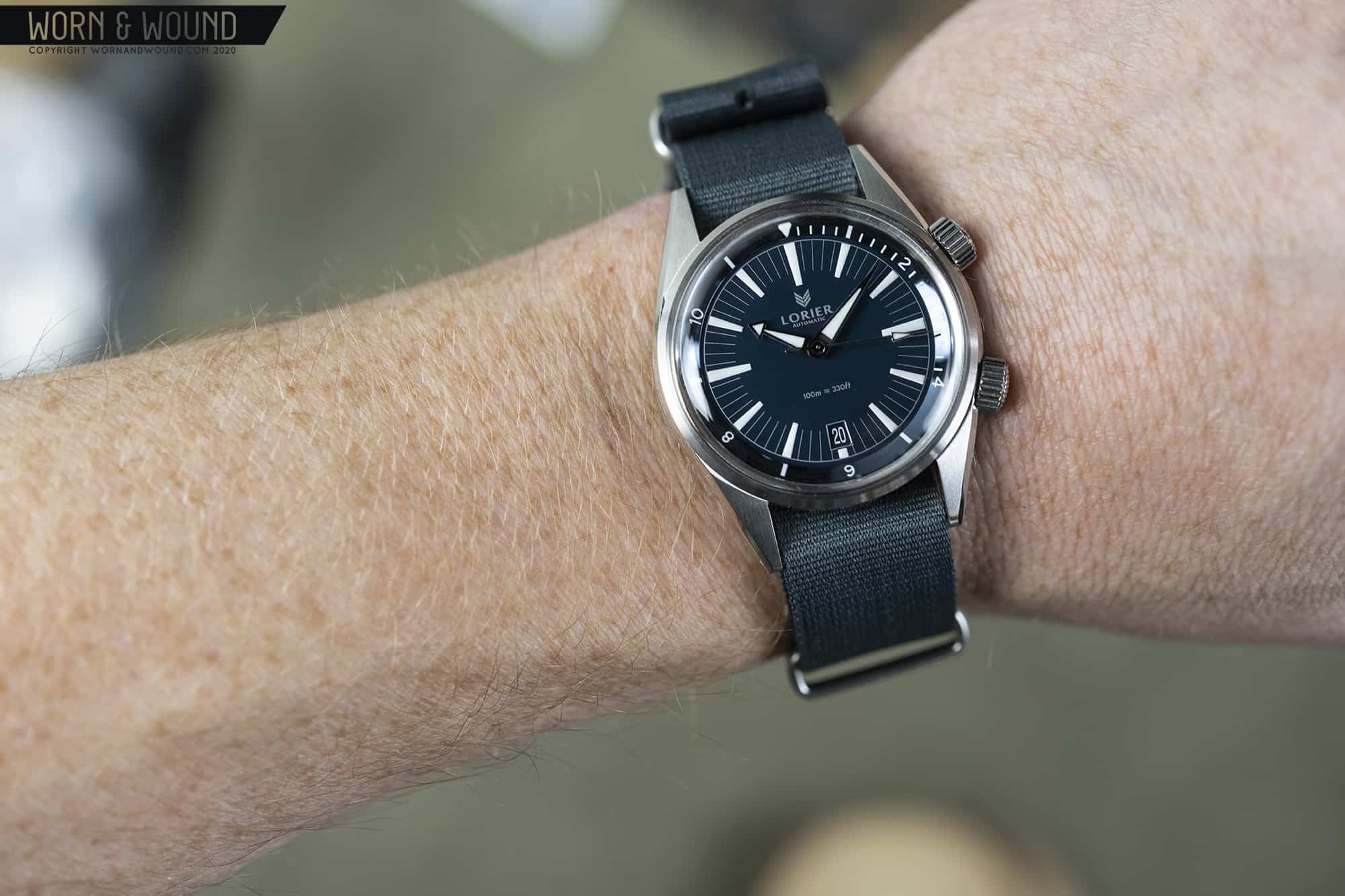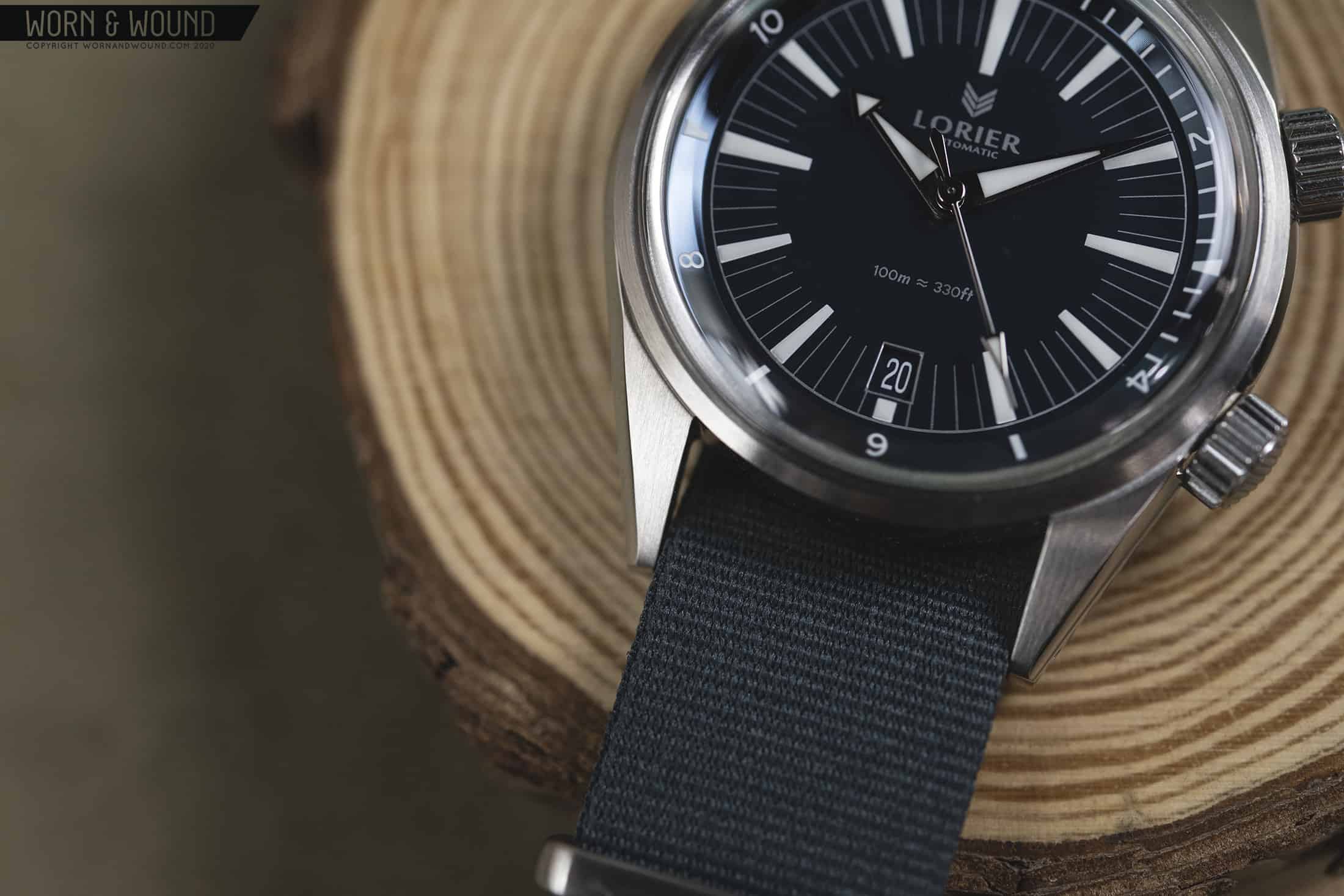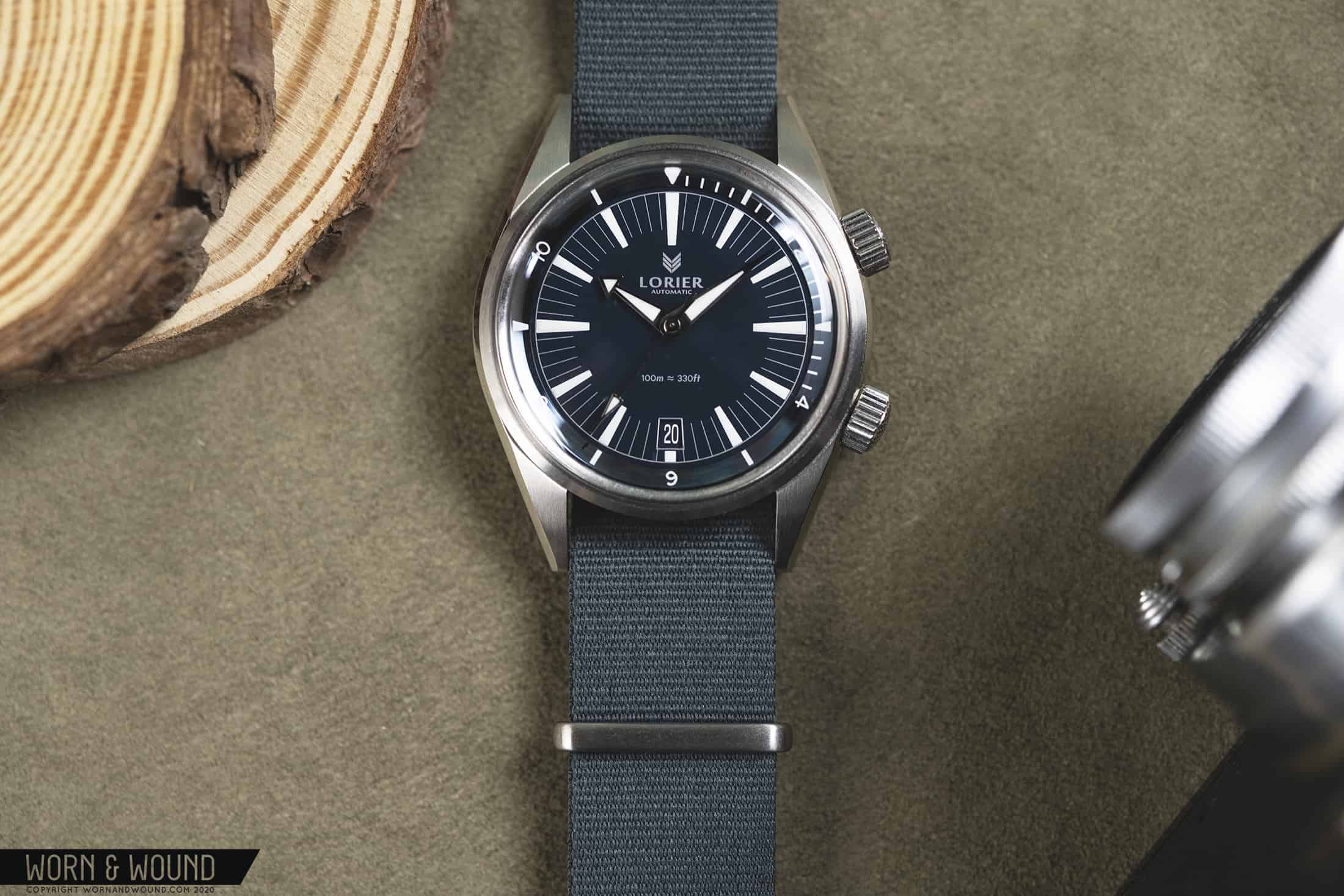I have to applaud Lorier here for sticking to their guns and embracing plastic. Frankly, I wish that more brands who are in the business of making watches that are meant to evoke timepieces of the 1950s and 60s had the gumption to go with plexiglass. It seems like when a brand goes down the “vintage style, modern features” route, it’s often the crystal that gets time-warped, with either a flat or double domed sapphire included, meant to look like old school plexi, but with all the scratch protection you get with modern materials.
To that I say: bring on the scratches! As Lorier points out on their site, the tool watches that inspired them all had plastic crystals, and they were no less usable underwater, on a mountainside, or even quite literally at war. The users of these watches in their heyday weren’t concerned with the completely removable scratches that an acrylic crystal is bound to pick up, and modern consumers who buy these watches to wear at their desks in these closing days of 2020 shouldn’t be either. If you simply must have a scratch free plexi lens, all you need is a tube of Polywatch, an old t-shirt, and about five minutes. But I have come to enjoy the look of the small micro-scratches picked up by my Speedmaster’s Hesalite crystal, my Lorier Gemini, and the plastic crystaled vintage watches in my collection, and don’t feel the need to remove them unless it really inhibits my view of the dial.
If you’re still hesitant about purchasing a watch like the Hydra II (or a vintage watch, or a Speedmaster, etc.) purely because of its crystal, my humble recommendation is to simply give it a chance, and really ask yourself why you need, or want, sapphire. Remember that while sapphire is very tough to scratch, it can certainly chip, and even shatter. If you look at enough used watch classified listings on the forums, you’ll see many watches with sapphire crystals that have tiny little chips, particularly around the perimeter. Significant damage to plastic crystals, beyond removable scratches, is fairly rare, even on watches that are 50 or 60 years old.
And look, I’m not here to say that brands should fully adopt the use of plastic crystals on their brand new watches. I own and enjoy a bunch of watches with sapphire crystals – my Tudor Pelagos would look very weird with a highly domed acrylic crystal. But I do think there’s plenty of room for both materials, and in the realm of watches that are really trying to capture a look and feel of a previous generation, I think plexi is the clear way to go.
Conclusion
Spending some time with the Hydra II has illuminated a truth about Lorier that I think is key to their success: their products across the board are incredibly consistent. Not just in terms of build quality and price, but the style cues and design language throughout the catalog are distinctly “Lorier” in a way that is predictable and reassuring, which is a pretty significant achievement for such a young brand. The case, handset, and bracelet are all easily identifiable as their own, and they fill in the gaps with tasteful details that do a great job of reminding us of the vintage watches that we all admire so much.
The Hydra II, with its dual crown layout and internal bezel, is a bit funkier than the other Lorier watches, and plays to a smaller crowd. It’s less conventional, and perhaps requires a bit more of an understanding of vintage watches to really “get it,” but if you’re open to the way it looks, I imagine this would be a rewarding watch to own.
![]()
I have to say, it’s a little ironic that Lorier strives to produce watches that are suitable as a “one watch” collection, because for me, as an enthusiast, I kind of want to collect them all. There’s something appealing to them as a series, as slightly different expressions of classic vintage watch forms, that they really get right. For someone like me, with a collector’s mentality, that’s like catnip. An affordable price point (the Hydra II sells for $499) makes it even easier to desire multiples.
But Lorier really caters to customers coming to them, and watches in general, for the first time, and that’s definitely something worth pointing out. Their website is filled with contextual information that helps you appreciate their watches and the story of the brand. Most brands do something similar, of course, but the depth of information within Lorier’s website is uncommon for brands at this price point. These watches might be suitable as a one watch collection if pressed, but the folks at Lorier want you to have a great experience with their product, and become an enthusiast, just like them. The Hydra II is the kind of watch that can send a new mechanical watch owner down the rabbit hole, which might be the strongest way to recommend it. Lorier









 Featured Videos
Featured Videos




